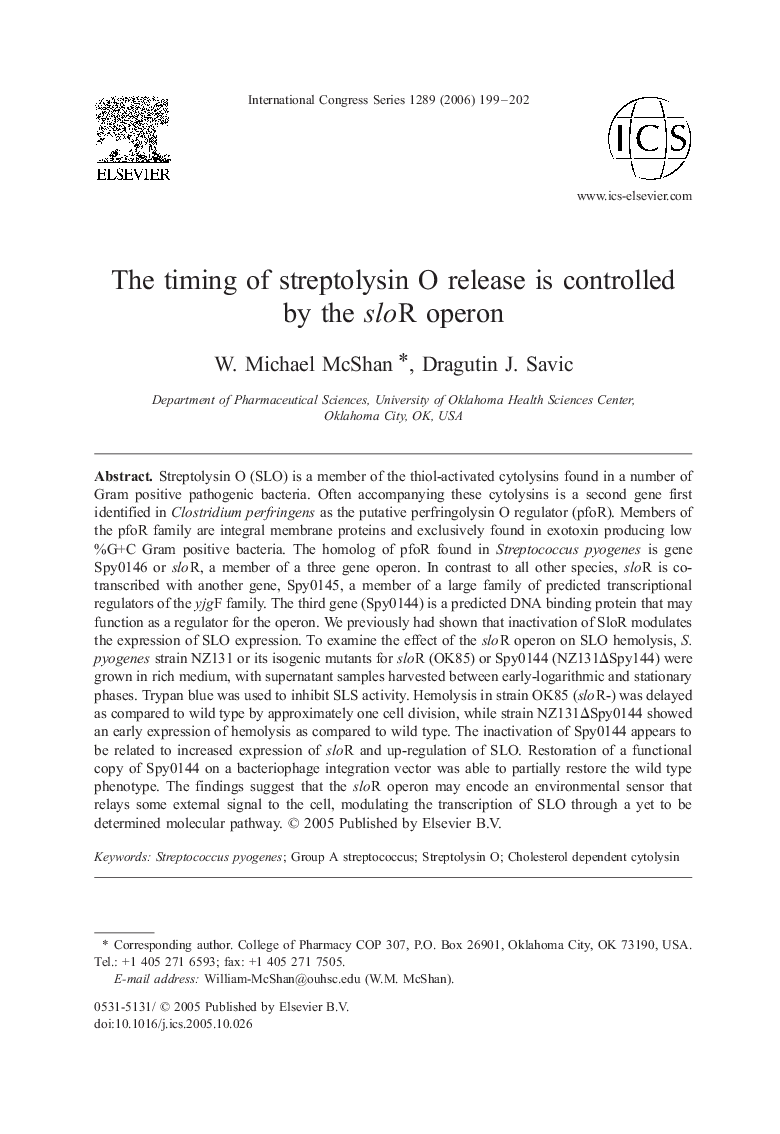| Article ID | Journal | Published Year | Pages | File Type |
|---|---|---|---|---|
| 2577438 | International Congress Series | 2006 | 4 Pages |
Streptolysin O (SLO) is a member of the thiol-activated cytolysins found in a number of Gram positive pathogenic bacteria. Often accompanying these cytolysins is a second gene first identified in Clostridium perfringens as the putative perfringolysin O regulator (pfoR). Members of the pfoR family are integral membrane proteins and exclusively found in exotoxin producing low %G+C Gram positive bacteria. The homolog of pfoR found in Streptococcus pyogenes is gene Spy0146 or sloR, a member of a three gene operon. In contrast to all other species, sloR is co-transcribed with another gene, Spy0145, a member of a large family of predicted transcriptional regulators of the yjgF family. The third gene (Spy0144) is a predicted DNA binding protein that may function as a regulator for the operon. We previously had shown that inactivation of SloR modulates the expression of SLO expression. To examine the effect of the sloR operon on SLO hemolysis, S. pyogenes strain NZ131 or its isogenic mutants for sloR (OK85) or Spy0144 (NZ131ΔSpy144) were grown in rich medium, with supernatant samples harvested between early-logarithmic and stationary phases. Trypan blue was used to inhibit SLS activity. Hemolysis in strain OK85 (sloR-) was delayed as compared to wild type by approximately one cell division, while strain NZ131ΔSpy0144 showed an early expression of hemolysis as compared to wild type. The inactivation of Spy0144 appears to be related to increased expression of sloR and up-regulation of SLO. Restoration of a functional copy of Spy0144 on a bacteriophage integration vector was able to partially restore the wild type phenotype. The findings suggest that the sloR operon may encode an environmental sensor that relays some external signal to the cell, modulating the transcription of SLO through a yet to be determined molecular pathway.
